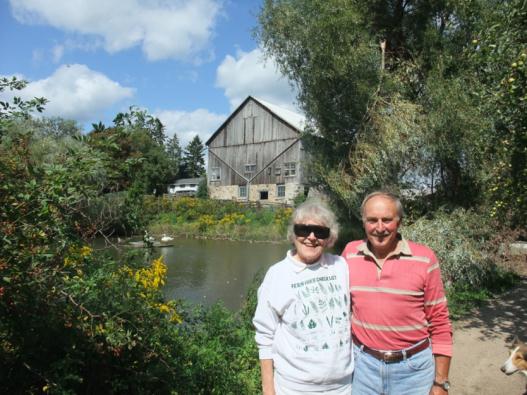Joan and Gerald Donnelly have lived on their 100 acre farm just outside of Mono Mills for 42 years, on land now designated part of the Niagara Escarpment. The couple believes in creating and protecting habitat for birds and other wildlife on their farm, having installed many bluebird, wood duck and bat boxes around their property. They’re also willing to share their barn with the swallows every year, despite the clean-up that is needed at the end of each season. Not only do the Donnellys provide habitat for many species on their property, they are actively managing their pastures in order to protect Bobolink (Dolichonyx oryzivorus) nesting sites.
The Bobolink is a grassland bird that nests on the ground in hayfields and pasture land. This native bird species is experiencing a dramatic drop in overall population numbers, a result of both landscape changes in North America and the loss of wintering and migratory grounds in South America. It is estimated that there could be between 300,000 to 400,000 breeding pairs in Ontario, which is the highest concentration in North America.
The Donnellys know that the Bobolink’s grassland habitat is impacted by current farming practices. The first haying of the season coincides with the bird’s nesting cycle. Although the Donnellys don’t actively hay anymore, Gerald keeps his Shorthorn cattle out of fields that he knows the Bobolink return to each year. He understands that farmers should consider the habitat needs of wildlife, especially species at risk. Gerald feels that it is more likely that landowners will adopt conservation-oriented farming practices such as delayed haying, using flushing bars on equipment, and establishing native grasses in areas which are less profitable, once they have an appreciation and understanding of the role native wildlife plays in the ecosystem.

